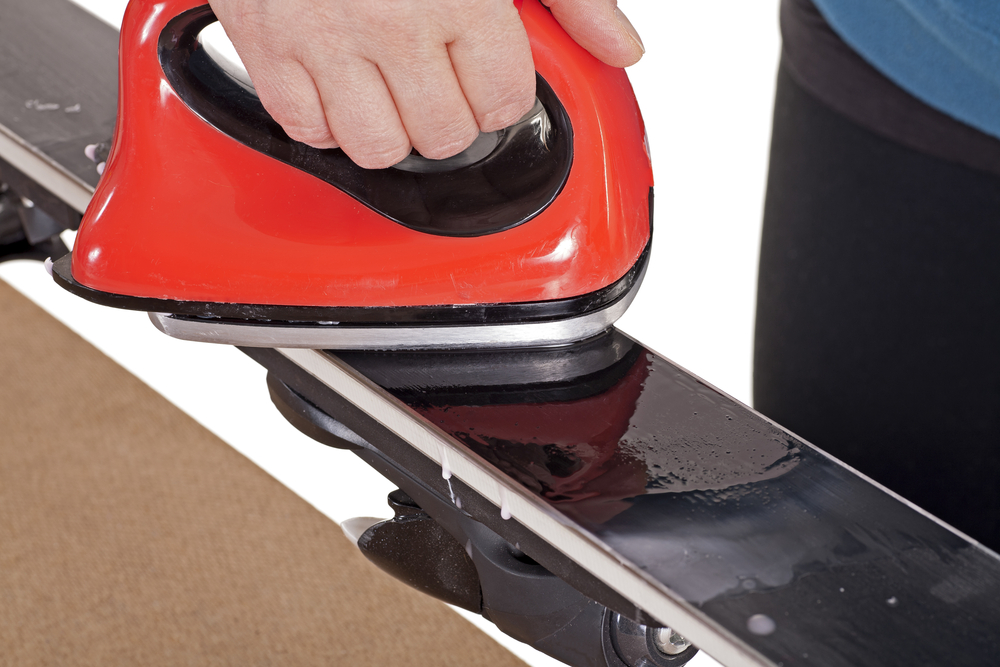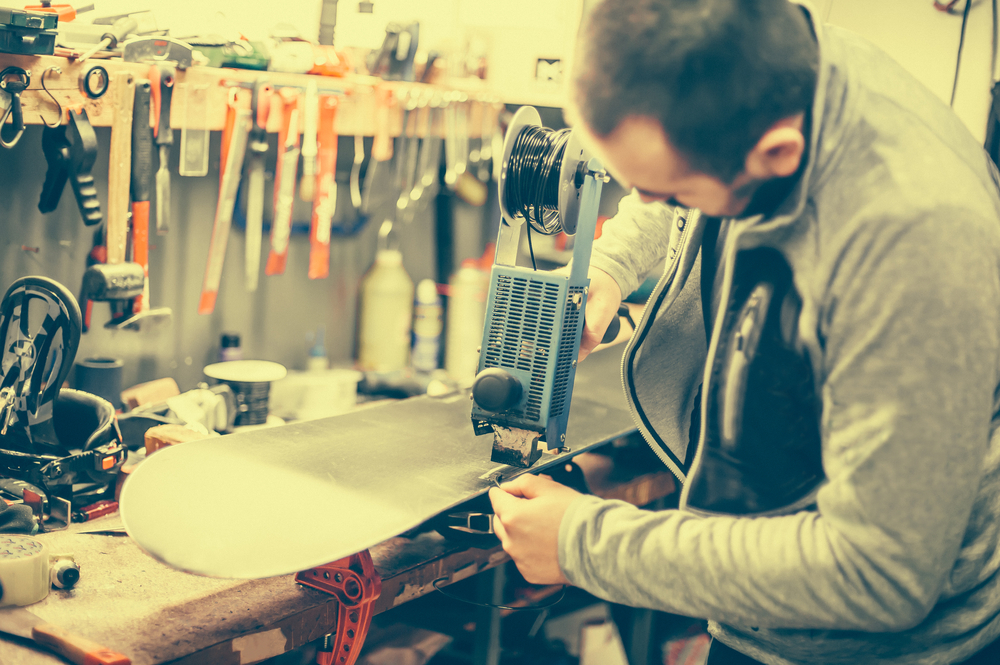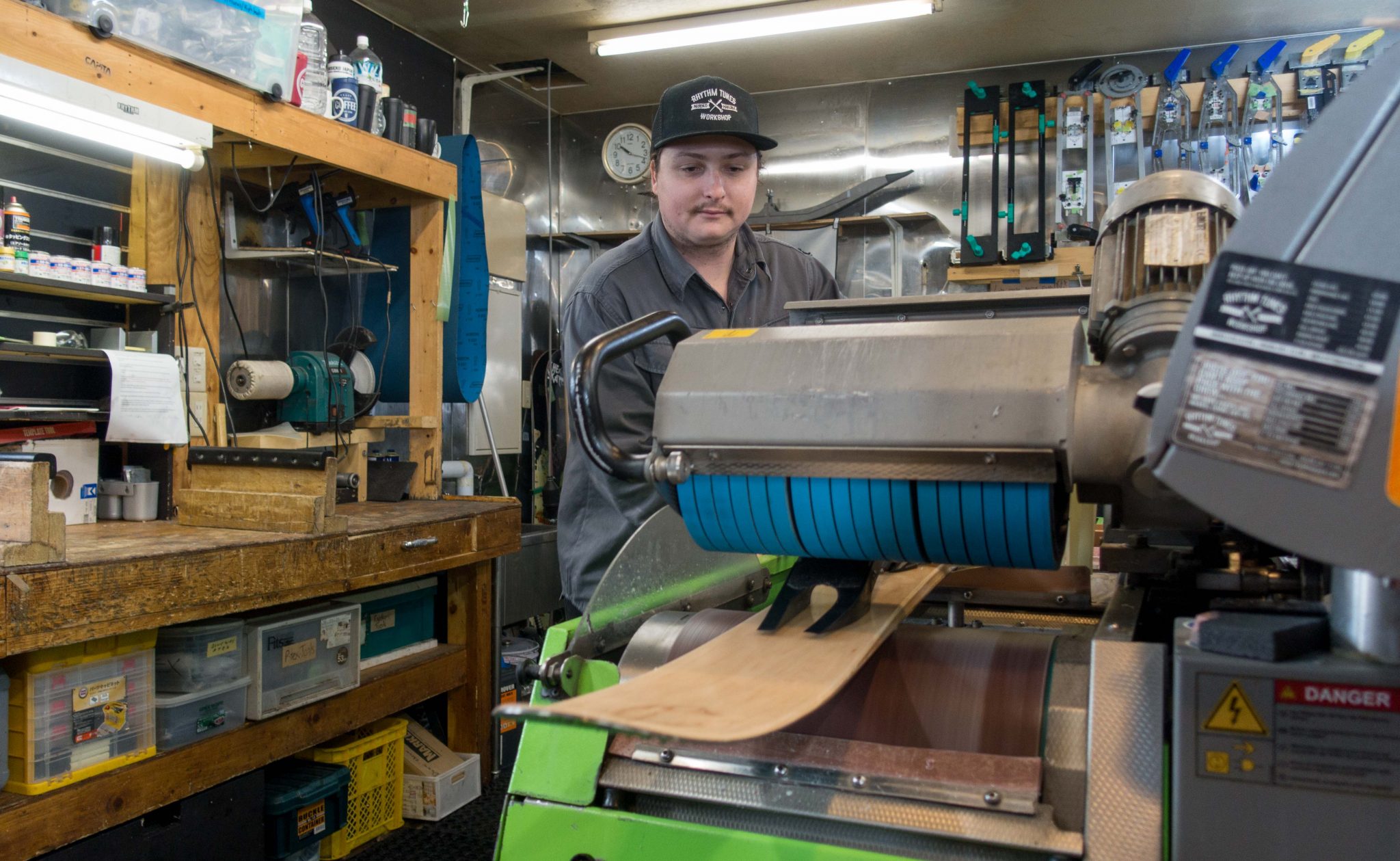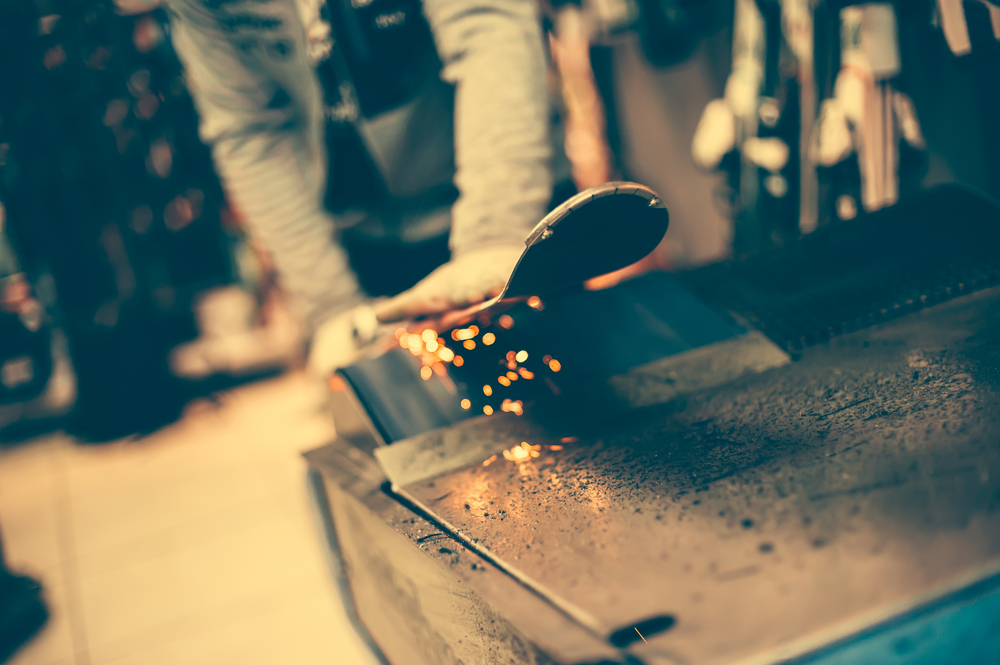I’ve been working as a ski tech for three seasons now, and I’m constantly surprised by how little people know about maintaining their equipment.
As an Australian I find that a lot of Kiwis and Aussies in particular, do not understand the importance of a good tune. This is partly due to the icy nature of our snow conditions, where you could probably slide downhill on a rug. However, when it comes to Canada or Japan, the fresh, dry snow necessitates an appropriate tune to keep your gear running fast and smooth. That is why we ski after all.
Wax on wax off
The most common request I get when customers walk up to the service counter is for a wax. But what sort of wax should you get and when? Depending on their equipment, different workshops may offer different levels of waxing. In order of least to most effective you might recognize: Quick/Buff wax, Future Wax, Hot wax, Hot box.

If you feel that your gear is running a bit slow, but it’s epic out, and you don’t want to call it for the day, then the Buff wax or Future wax is for you. Drop your gear in at lunch and get a quick 10-30 min turn around. This sort of wax will likely be a wide temperature range wax and it won’t penetrate the base very deep meaning it will only last for several runs. But hey, it’ll get you through that epic pow day until you can get a proper tune.
A Hot wax is the classic iron on application and the industry standard. However, your ski tech might offer regular waxes and performance waxes. A regular wax will likely be a wide range hydro carbon wax, designed to work well in a range of snow conditions but not amazing in any particular one. A performance wax may include regular wax as a base layer and then a combination of performance waxes on top to match the current conditions.
I like to test different waxes each morning, and then decide if they are running fast for current conditions.
Watch out though, if you run touring gear make sure you let your tech know so that he doesn’t apply any fluorinated waxes which will wreck your skins.
For wet snow I recommend a high fluorinated wax. While more expensive, these are your best bet to stop from getting sucked down. Trust your tech and know that if you want to go quick, don’t settle for a basic wax.
The most important thing here is to not rush your tech. If he says it’s going to be 2 hours that’s because the wax has to cool down properly before scraping. If you twist his arm into scrapping after half an hour, you’re only wasting your own money as the wax won’t last as long or work to its potential.
A Hot box is rarer but involves leaving your equipment in a hot box allowing the wax to soak in over a period of hours. I’ve heard claims that a good hot box can be equivalent to 100 hot waxes but I have yet to test this myself.
I see a lot of people who wax themselves and then for some reason don’t scrape it off. Please know that you need to scrape your wax off. The drier the snow the less wax you want left on there, which means lots of brushing.
Get the edge, from groomer to park
Edges are probably the second most common thing I get asked for, especially while I was working in New Zealand. The key thing to know about edges is that every process your tech has for sharpening edges takes some degree of life away from them.
Edges can be a catch 22, If you over tune your edges they will get thinner and thinner to the point where they become very delicate, on the flipside however, the more out of hand you let them get the more aggressive your tech will have to get when he tunes them.
So, you have to walk that line of keeping them in good condition but not going overboard. If you hit rails all day and then want to lay down trenches on an icy day with your buddies there is really not much your tech can do for you unfortunately.
When you get some new park skis or board I would recommend doing one of two things right away. Asking your tech for 2° base bevel or asking him to detune the ski underfoot keeping the rest of the effective edge nice and sharp. This will stop you from catching edges on rails while still allowing you to grip on those icy take-offs.
Another angle
A note on angles. I always ask customers if they have a preference for edge angles and more often than not the customer has no idea, which is fine. If that’s the case I will normally continue to tune at the factory setting which for the most part is 89° side bevel and 1° base bevel, a good all mountain angle.
There are many great articles about the merits of different edge angles but know these key things. The sharper the angle, the more grip but the less durable. Meaning you are committing to tuning more often. 90° is the most durable edge angle. Once you commit to a sharper angle it’s very hard to bring it back to 90° if you don’t like it.
It’s all about that base
Base structure is the oft-overlooked ingredient of a good tune. Essentially a base structure involves running your gear over an expensive stone grinding machine to grind a pattern into the base of your equipment. This pattern, referred to as the structure, works in conjunction with the wax to help you slide on the snow.
Getting a good structure, especially in snowboards can take a bit of finesse and it’s probably one of the processes I spend the most time on. The machines vary in complexity, but most are capable of a few different patterns, each designed for different conditions.

Just like waxing, the structure is very condition dependant. Some general rules of thumb are; the wetter the snow ie. Springtime, the deeper your structure should be, the drier the snow ie. Japow, the finer your structure should be.
Structures are pretty permanent things, only a base grind, rocks or extremely abrasive snow will damage them. However, as the conditions change, you may want to structure a couple of times throughout the season for maximum performance.
Just be aware that while the stone itself doesn’t take too much life off your gear, a base grind will, and they often go hand in hand. Additionally, more often than not, manufacturers sell their product with a belt finish only. Therefore, it’s often necessary to get a base structure put in to your brand new gear.
Base grinding
There are several reasons your tech may recommend a base grind for you. If you have lots of scratches from a thin snow pack then a base grind is essential in preparing the base material for Ptex repair. Often skis and boards can become edge or base high and sometimes even brand new equipment isn’t flat.
A base grind will be used to flatten out your equipment which is crucial for an enjoyable experience. A base polish may be offered by your tech as well. This will be using an oxidisation belt which takes no life away from your gear. It is useful as preparation for wax when a piece of equipment is overly dry or furry.

It polishes the surface of the base material and cleans out any dirt and grime thus opening up the pores in the plastic and allowing the wax to penetrate deeper. I polish my skis almost every time I wax them. This can be particularly important in springtime when the snowpack gets a lot dirtier.
The process
Customers are often confused when I tell them that to get the most out of their skis or board, they need for example, a finer base structure. Then suddenly they find they are sold, a base grind, edge and wax as well.
‘But I just got a wax last week?’ Unfortunately, rather than being some sales trickery, this misunderstanding is actually due to the process.
As everything has to be done in a specific order, it’s rare that you can pick and choose only certain steps independently. In the above example, the board already has a structure, so first it needs a base grind to flatten it out and create a blank canvas.
Once it has had its base ground, it needs an edge grind to reset the base bevel and to ensure the edge doesn’t contact the stone. Only then can the new base structure be put in.
Well unfortunately this amount of machine work has essentially evaporated the wax. So now it’s important to lay down a new base coat, and soak it in, nice and deep. Just remember all the steps chosen by your tech impact the ultimate performance of your board or skis.
It is important to trust them, and not twist their arm and skip steps just to save a few dollars.
Looking after your equipment is crucial to its performance and longevity and also to your own enjoyment. When you get stuck on a flat spot or your buddy rips past you making you eat his snow, or if your skis are running slow or your turns feel sloppy or harsh, remember these are all things that a proper tune can address.
After all we don’t strap planks of wood to our feet and slide down snow to be miserable. It’s all about having fun. So please find a tech you trust because they can make the difference between an epic pow day or a 4 hour slog back to base.
And remember, don’t forget to tip your techs, especially in the USA.







No ski would ever leave a factory with a one degree (89) side edge angle, so Sam is detuning every ski he sets at 89 degrees, it is not hard to measure the existing edge angle of a ski, that is what I do, rather than changing it. Most ski would be either 88 degrees or 87 degrees these days.